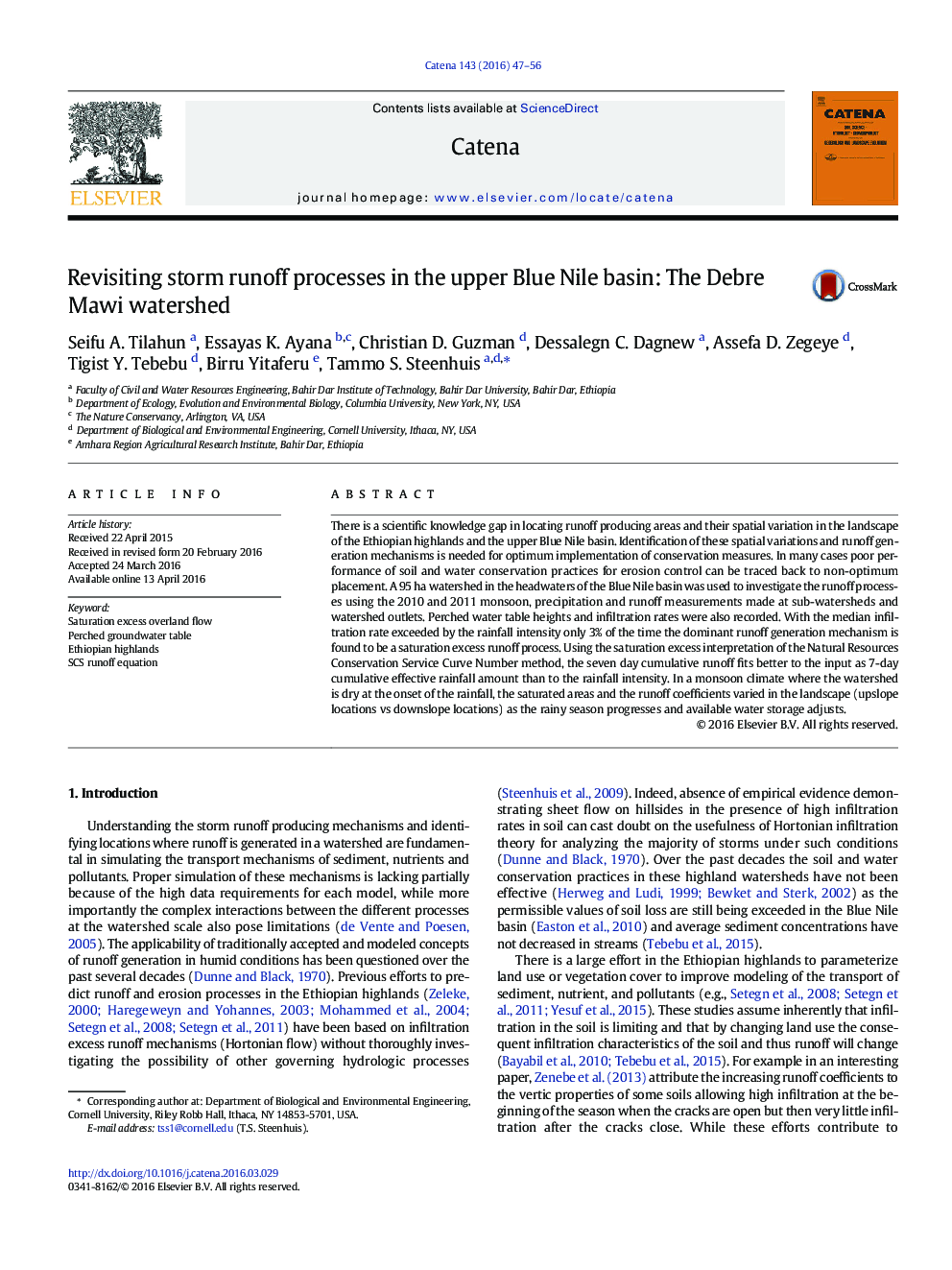| Article ID | Journal | Published Year | Pages | File Type |
|---|---|---|---|---|
| 6407853 | CATENA | 2016 | 10 Pages |
â¢SCS Curve Number method can model saturation excess runoff in the Ethiopian basins.â¢Rainfall intensities are generally lower than infiltration capacity of the soil.â¢Contributing runoff source areas seasonally ranged from 60 to 10% of the watershed.
There is a scientific knowledge gap in locating runoff producing areas and their spatial variation in the landscape of the Ethiopian highlands and the upper Blue Nile basin. Identification of these spatial variations and runoff generation mechanisms is needed for optimum implementation of conservation measures. In many cases poor performance of soil and water conservation practices for erosion control can be traced back to non-optimum placement. A 95Â ha watershed in the headwaters of the Blue Nile basin was used to investigate the runoff processes using the 2010 and 2011 monsoon, precipitation and runoff measurements made at sub-watersheds and watershed outlets. Perched water table heights and infiltration rates were also recorded. With the median infiltration rate exceeded by the rainfall intensity only 3% of the time the dominant runoff generation mechanism is found to be a saturation excess runoff process. Using the saturation excess interpretation of the Natural Resources Conservation Service Curve Number method, the seven day cumulative runoff fits better to the input as 7-day cumulative effective rainfall amount than to the rainfall intensity. In a monsoon climate where the watershed is dry at the onset of the rainfall, the saturated areas and the runoff coefficients varied in the landscape (upslope locations vs downslope locations) as the rainy season progresses and available water storage adjusts.
